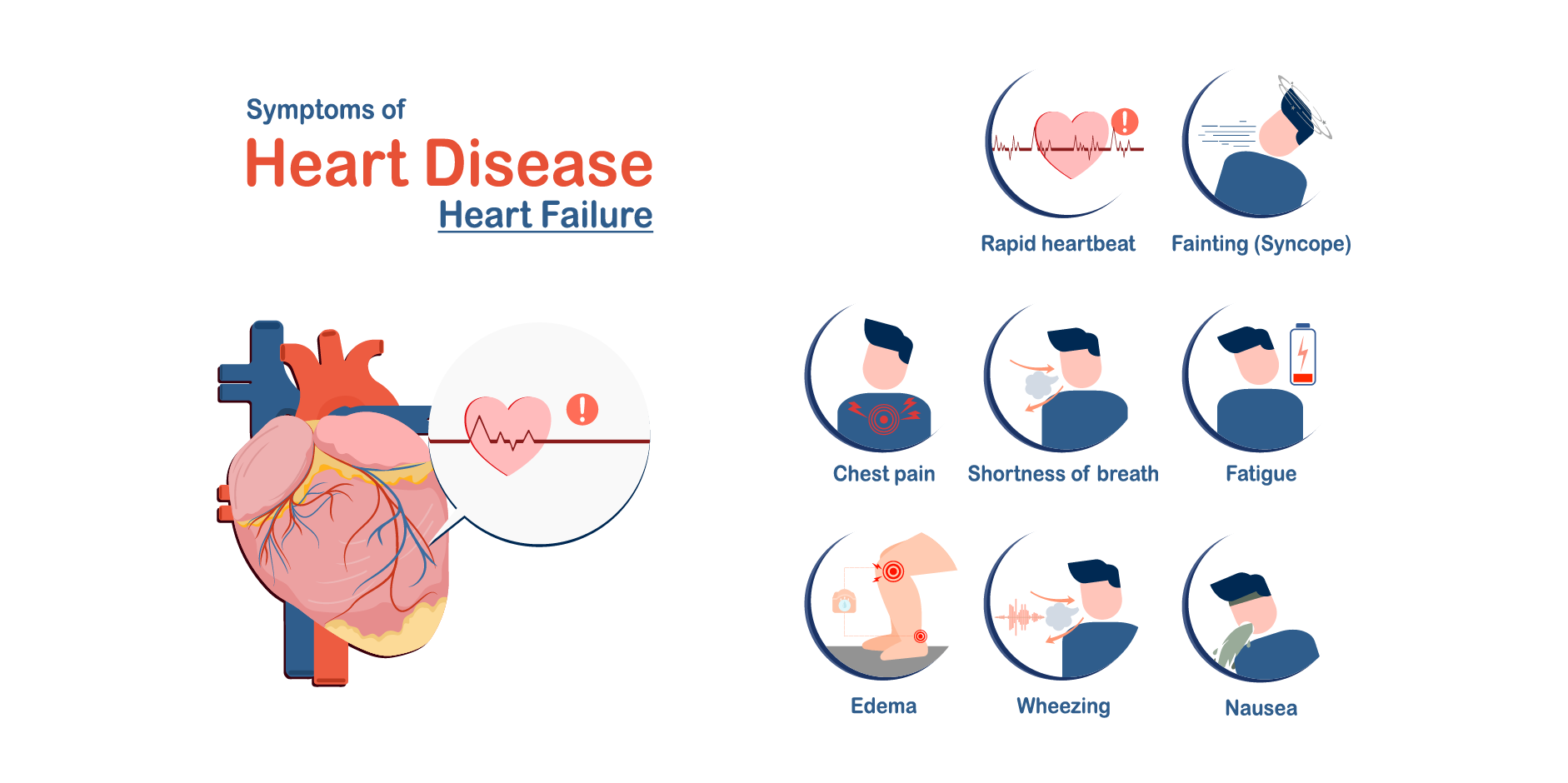Content on this page:
Content on this page:
Clinical Presentation
The diagnosis of acute heart failure is based on clinical findings
supported by appropriate diagnostic exams performed urgently after first
patient contact and identifies patients in cardiogenic shock and respiratory
failure.
Heart Failure
Heart failure leads to neurohormonal and circulatory abnormalities
producing the following manifestations: Breathlessness/dyspnea at rest or on
exertion; unexplained fatigue or tiredness; decreased exercise capacity or
increased time to recover after exercise; orthopnea; bendopnea; paroxysmal
nocturnal dyspnea (PND) or nocturnal cough; cough or wheezing; palpitations; anorexia,
nausea, vomiting, abdominal pain, bloated feeling, early satiety, or ascites; peripheral
edema, and ankle swelling; confusion, disorientation, cognitive decline; weakness,
or depression (especially in the elderly); weight gain (>2 kg/week); weight
loss (in advanced heart failure); and syncope. More specific signs that are typical
of heart failure include elevated jugular venous pressure, hepatojugular
reflux, pulmonary crackles, an apical impulse that is laterally displaced, and the
presence of S3 (gallop rhythm).
 Heart Failure - Acute_Initial Assesment 1
Heart Failure - Acute_Initial Assesment 1Acute Heart Failure
Acute heart failure is characterized by pulmonary congestion, decreased cardiac output, and tissue hypoperfusion. Most acute heart failure patients present with normal or high blood pressure (BP) and signs and/or symptoms of congestion instead of a low cardiac output. This is a life-threatening condition that needs immediate medical attention.
The indications for hospital admission include a new diagnosis of heart failure with rapidly progressive symptoms, severe congestion (eg ascites, marked leg edema, perineal or scrotal edema) or higher complexity of disease. This may be transient and reversible with resolution of the acute syndrome or may induce permanent damage leading to chronic heart failure.
History
Patients may present with new-onset heart failure or an acute decompensation of chronic heart failure. Patients most commonly complain of progressive dyspnea, abdominal fullness or tenderness, ankle swelling, nocturia, and neurologic symptoms (eg confusion, disorientation). Cardiogenic shock may present in patients with acutely decompensated heart failure.
Physical Examination
 Heart Failure - Acute_Initial Assesment 2
Heart Failure - Acute_Initial Assesment 2The physical examination includes taking of the vital signs (eg low or high blood pressure, bradycardia, tachycardia with pulsus alternans, irregular pulse, tachypnea, increased work of breathing, apnea or hypopnea with respiratory rate <8 breaths/minute despite dyspnea, intolerance of supine position) and the patient's body mass index (BMI). Assess the hemodynamic status, heart rhythm, and level of dyspnea to determine the degree of cardiopulmonary instability. Check for murmurs, laterally displaced or prominent apex beat, S3 gallop, and accentuated pulmonic component of the second heart sound; a normal cardiac examination may be noted in heart failure from diastolic dysfunction. Hypoperfusion is a low output state usually caused by pump failure (eg cold sweaty extremities, oliguria, narrow pulse pressure, altered mental status, dizziness, and capillary refill time >2 seconds). This is often accompanied by but is not synonymous with hypotension. Congestion may be a left-sided (bilateral pulmonary rales, bilateral peripheral edema [eg ankle, sacral, scrotal]) or a right-sided (elevated jugular venous pressure, bilateral peripheral edema, hepatomegaly, ascites, hepatojugular reflux) volume overload.
Based on the physical exam, acute heart failure can be classified based on the presence or absence of congestion (wet or dry) and/or hypoperfusion (cold or warm).
- Warm-dry: Both hypoperfusion and congestion are absent
- Warm-wet: Congestion present but without hypoperfusion
- Cold-dry: Hypoperfusion present but without congestion
- Cold-wet: Both hypoperfusion and congestion are present
